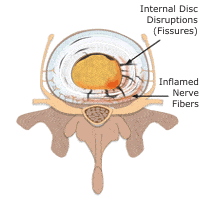Non-surgical treatment to relieve back pain
Low back pain is one of the main reasons Indian visit their doctor. For adults over 40, it ranks third as a cause for doctor visits, after heart disease and arthritis.Eighty percent of people will have low back pain at some point in their lives. And nearly everyone who has low back pain once will have it again.With these facts in mind, you can be assured that back pain is common, that it usually only causes problems for a short period of time, and that you can take steps to ease symptoms and prevent future problems.

Nonsurgical Treatment
Our goal is to establish source of pain or structure which is causing pain & whenever possible, we prefer to use advanced yet simple treatments other than surgery. The first goal of these nonsurgical treatments is to ease your pain and other symptoms.
Bed Rest
In cases of severe pain, doctors may suggest a short period of bed rest, usually no more than two days. Lying on your back can take pressure off sore discs and nerves. Most doctors advise against strict bed rest and prefer that patients do ordinary activities using pain to gauge how much is too much.
Back Brace
A back support belt is sometimes recommended when back pain first strikes. It can help provide support and lower the pressure inside a problem disc. Patients are encouraged to gradually discontinue wearing the support belt over a period of two to four days. Otherwise, back muscles begin to rely on the belt and start to shrink (atrophy).
Medications
Pharmacotherapy – NSAIDs (Ibuprofen like drugs), Acetaminophen (Paracetamol), muscle relaxants, and membrane stabilizing medications are often effective in treating low back pain. Many different types of medications are typically prescribed to help gain control of the symptoms of low back pain. There is no medication that will cure low back pain. Medications are prescribed to help with sleep disturbances and to help control pain, inflammation, and muscle spasm.
Physical Therapy and Exercise
In addition to other nonsurgical treatments, doctors often ask their patients to work with a physical therapist. Therapy treatments focus on relieving pain, improving back movement, and fostering healthy posture. A therapist can design a rehabilitation program to address a particular condition and to help the patient prevent future problems. There is a great deal of scientific proof that exercise and increased overall fitness reduce the risk of developing back pain and can improve the symptoms of back pain once it begins.
Targeted treatment of condition
Injections / Intervention
Spinal injections are used for both treatment and diagnostic purposes. There are several different types of spinal injections that your doctor may suggest. These injections usually use a mixture of an anesthetic and some type of cortisone preparation. The anesthetic is a medication that numbs the area where it is injected. If the injection takes away your pain immediately, this gives your doctor important information suggesting that the injected area is indeed the source of your pain. The cortisone decreases inflammation and can reduce the pain from an inflamed nerve or joint for a prolonged period of time.
Some injections are more difficult to perform and require the use of a fluoroscope. A fluoroscope is a special type of X-ray that allows the doctor to see an X-ray picture continuously on a TV screen. The fluoroscope is used to guide the needle into the correct place before the injection is given.

Selective nerve root Injection
Aim of injection procedure to place anti-inflammatory medication around a specific inflamed nerve root is called a selective nerve root injection. The fluoroscope is used to guide a needle directly to the painful spinal nerve root. The nerve root is then bathed with the medication. Some doctors believe this procedure gets more medication to the painful spot. In difficult cases, the selective nerve root injection can also help surgeons decide which nerve root is causing the problem before surgery is planned.

Facet Joint Injection
When the problem is thought to be in the facet joints, an injection into one or more facet joints can help determine which joints are causing the problem and ease the pain as well. The fluoroscope is used to guide a needle directly into the facet joint. The facet joint is then filled with medication mixture. If the injection immediately eases the pain, it helps confirm that the facet joint is a source of pain. The steroid medication will reduce the inflammation in the joint over a period of days and may reduce or eliminate your back pain.
Medial Branch Blocks/Denervation
Medial Branch Blocks (MBB) are a minimally invasive non-surgical treatment that are used for arthritis related neck and back pain. The injections work by reducing the inflammation and irritation in the facet joints of the spine that is causing your pain.

Lysis of Adhesions
Also known as the “Racz Procedure,” this procedure has proven effective in removing excessive scar tissue in the epidural space when conservative treatment for lower back pain has failed. A study performed in 2005 said, “a spinal adhesiolysis with targeted delivery of local anesthetic and steroid is an effective treatment in a significant number of patients with chronic low back and lower extremity pain without major adverse effects.” This procedure is used in vertebral body compression fractures, post-laminectomy syndrome, radiculopathy, and disc disease.
Trigger Point Injections
Injections of anesthetic medications mixed with pain medication are sometimes given in the muscles, ligaments, or other soft tissues near the spine. These injections are called trigger point injections. These injections can help relieve back pain and ease muscle spasm and tender points in the back muscles.
Consult Spinomax pain & spine center for advanced non- surgical back pain treatment.









